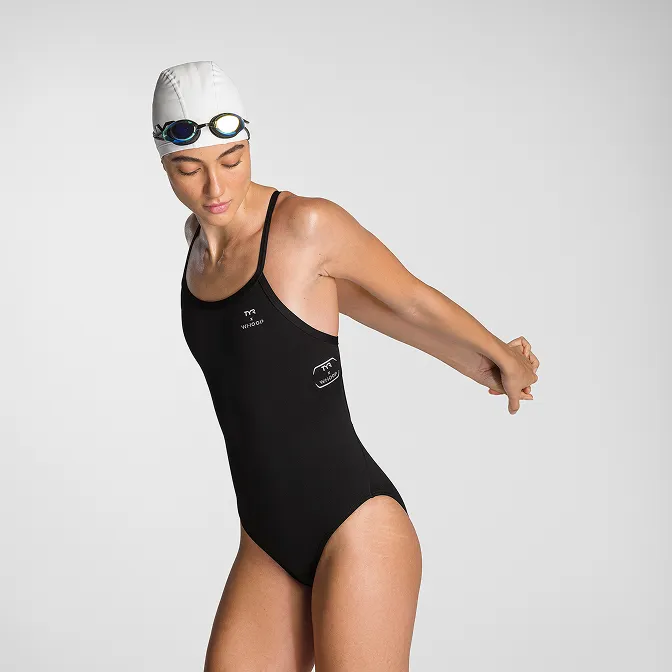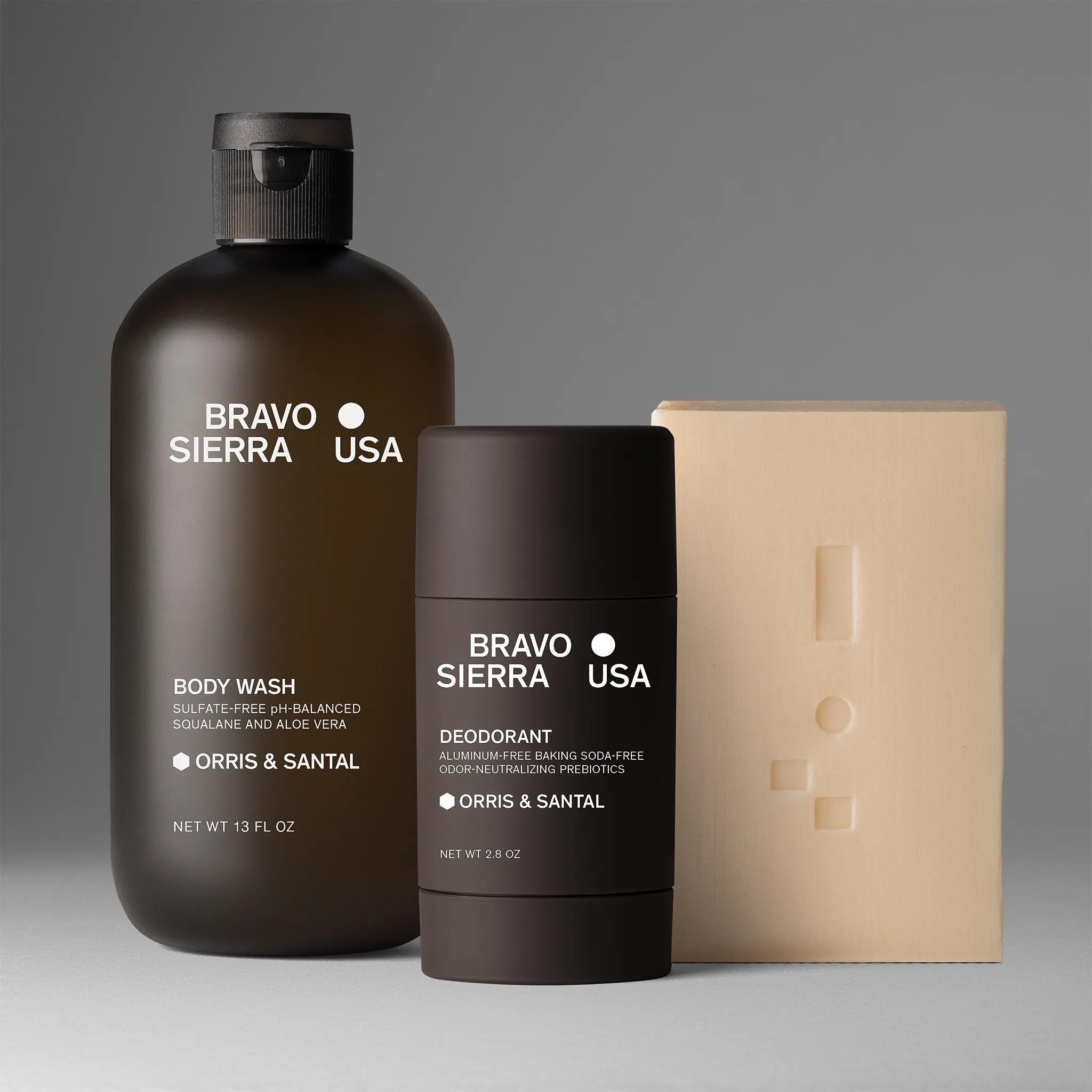Did you know that product image optimisation can make or break your e-commerce success in 2025? With shoppers making snap decisions based on visuals, optimising your product photos is no longer optional — it's essential.
In this guide, you'll discover proven strategies to boost conversions and customer engagement. We'll unpack everything from technical requirements and visual best practices to powerful SEO enhancements, automation tools, and the latest trends shaping the future.
Ready to transform your product images into a conversion-driving asset? Dive in for actionable steps that deliver real results.
The Critical Role of Product Images in E-Commerce Success
Product image optimisation is now the heartbeat of successful e-commerce. Shoppers are more visual than ever, and the way a product looks online can make or break a sale. Let's explore why investing in your images is the smartest move for your brand in 2025.
Consumer Behavior and Visual Decision-Making
Did you know 75% of online shoppers rely on product photos to make purchase decisions? Visuals are a shopper's first handshake with your brand. High-quality images foster trust, help reduce product returns, and set your products apart in crowded marketplaces.
Product image optimisation isn’t just about looking good — it’s about building confidence and driving action.
Impact on Conversion Rates and Revenue
Data from Shopify highlights that products featuring zoomable, high-resolution photos see a clear increase in cart additions.
On the flip side, poor images can result in higher bounce rates and abandoned carts. For a deeper dive into these statistics, check out the E-commerce Image Optimization Study 2025, which details how image strategies fuel revenue growth.
Mobile Commerce and Image Adaptation
With over 60% of e-commerce traffic coming from mobile devices, optimising product images for mobile is non-negotiable. Responsive, fast-loading photos are essential for capturing mobile shoppers and preventing frustration.
Adapting image formats and sizes specifically for mobile ensures that every customer enjoys a seamless, visually rich experience — no matter the screen size. Product image optimization for mobile users is essential for staying competitive.
Building Brand Identity and Trust
Consistent, well-lit images are the foundation of a strong brand identity. When customers see a unified look across your catalog, it builds recognition and loyalty. Lifestyle and contextual shots go a step further, creating emotional connections and inspiring buyers.
For example, home goods retailers leveraging styled images help shoppers envision products in their own spaces, which increases engagement and trust. Product image optimisation here isn’t just technical — it’s about storytelling.
Psychological Triggers and Visual Storytelling
Color, composition, and styling aren’t just artistic choices — they’re psychological triggers. The right palette and layout can elevate perceived value and influence buying decisions.
Story-driven images, where products are shown in use or within a narrative, make items feel more aspirational and high-quality. Product image optimisation taps into these subconscious cues, turning browsers into buyers.
Technical Foundations: Preparing and Uploading Optimised Product Images
Getting technical foundations right is the secret sauce behind effective product image optimisation. With the right approach, your images load faster, look sharper, and drive more conversions — no matter the device or platform.
Choosing the Right Image Formats
Selecting the ideal image file format is the first step in product photo optimisation. JPEG is best for photos with lots of colors and gradients, offering small file sizes with good quality. PNGs work well for images needing transparency or crisp edges, but tend to have larger file sizes.
WebP is gaining ground in e-commerce. It delivers superior compression, reducing load times by up to 25% compared to JPEG or PNG. This means your product image optimisation efforts directly impact user experience and search rankings.
Understanding when to use each format is key to optimising your product images for every scenario.
Image Sizing and Resolution Best Practices
Proper sizing ensures your product image optimisation doesn't come at the expense of clarity or speed. For zoom features, aim for images around 2000px on the longest side. For thumbnails or mobile, smaller sizes (400–800px) are ideal.
Balance is critical: large files slow down your site, but tiny images look pixelated. Image Optimizers like TinyPNG and ImageOptim help resize images without visible quality loss. For a full breakdown of standards, the E-commerce image standards guide offers actionable tips.
Always preview images on both desktop and mobile before uploading to ensure consistency and sharpness across devices.
Compression Techniques for Faster Loading
Compression is a cornerstone of product image optimisation. There are two main approaches: lossy (removes some data for smaller files) and lossless (keeps all data but reduces the size less). The trick is to compress enough to speed up loading, but not so much that your images look blurry or distorted.
Automated plugins for Shopify, WooCommerce, and Magento streamline compression. A major retailer once cut page load times by 1.5 seconds just by compressing product images. Faster loading means happier shoppers and lower bounce rates.
Naming Conventions and File Structure
Search engines and users both benefit from clear, descriptive file names — a key part of product image optimisation. Use keywords and product details in names, like red-running-shoes-mens.jpg, instead of generic names like IMG1234.jpg.
Organize images in folders by category or SKU to keep things scalable. This structure simplifies updates and makes managing a large catalog much less daunting.
Responsive Images and Adaptive Delivery
With most shoppers browsing on mobile, responsive product image optimisation is non-negotiable. Use HTML's srcset and picture elements to serve different image sizes based on the device. Lazy loading delays off-screen images until needed, boosting performance.
Mobile-first indexing means search engines prioritize mobile-optimised images. Responsive delivery ensures that every shopper sees crisp, fast-loading visuals, regardless of their device.
Image CDN and Hosting Solutions
A Content Delivery Network (CDN) is a powerhouse for product image optimisation. CDNs like Cloudflare and AWS CloudFront store your images on multiple servers worldwide, so customers get fast access wherever they are.
Benefits include reduced load times, higher site reliability, and better handling of traffic spikes. For e-commerce brands, using a CDN is a wise investment in speed and scalability.
Visual Optimisation: Best Practices for Compelling Product Images
Captivating visuals are at the heart of product image optimisation. Strong imagery not only attracts shoppers but also builds trust and increases conversions. Let’s break down the most effective techniques to ensure your product images stand out and drive results.
Lighting, Composition, and Backgrounds
Lighting is the foundation of effective product image optimisation. Soft, even lighting eliminates harsh shadows and highlights product details. Natural light is ideal, but softbox or LED panels can provide consistency in any setting.
Choosing the right background is just as important. White backgrounds are standard for catalogs, making products pop and streamlining editing. Colored or lifestyle backgrounds add personality and align visuals with brand identity. Always avoid clutter or distracting elements that can pull focus from the product.
Careful composition places the product front and center, using the rule of thirds or symmetry to guide the eye. Experiment with angles, but keep the product’s features clear and visible.
Multiple Angles and 360-Degree Views
One of the most effective ways to boost product image optimisation is to provide multiple angles. Shoppers want to see every detail — front, back, sides, and close-ups. This reduces uncertainty and builds confidence in the purchase.
Interactive 360-degree views take engagement a step further. By allowing customers to rotate and explore products, you create an experience closer to in-store shopping. Studies show that listings with 360-degree images see up to 32% more engagement.
Use platforms or plugins that support 360-degree spins and ensure all images are clear, sharp, and consistently lit. This approach minimizes surprises and helps reduce returns.
Consistency Across Product Catalogs
Consistency is crucial for product image optimisation, especially when managing large catalogs. Uniform sizing, cropping, and backgrounds create a cohesive look, making your brand appear professional and trustworthy.
Batch editing tools and templates can streamline the process. Set specific guidelines for image dimensions, aspect ratios, and background colors. This not only speeds up workflow but also ensures that every product, from top sellers to new arrivals, fits seamlessly into your online store.
Consistent visuals help shoppers compare products easily, reinforcing your brand’s reliability.
Incorporating Lifestyle and Contextual Images
Lifestyle images are a game-changer for product image optimisation. Showing products in real-life scenarios boosts relatability and inspires buyers. For example, displaying apparel on models or home goods in styled rooms lets customers envision ownership.
Contextual images can demonstrate scale, function, or unique features. Use props sparingly — choose items that enhance rather than distract. The goal is to tell a story that connects emotionally with your audience.
Brands that invest in lifestyle imagery often see higher average order values and stronger customer loyalty.
Use of Models, Props, and Styling
For premium items, investing in models or styled shoots elevates product image optimisation. Models add personality, demonstrate fit, and help customers see themselves using the product. Props are useful for showing size or function, but keep them minimal. Styling should be intentional—choose complementary colors, textures, and accessories that highlight the product.
Plan your shoots carefully to ensure every element supports the product and aligns with your brand’s aesthetic.
Advanced Retouching and Color Accuracy
Retouching is vital for professional results. Clean up dust, remove imperfections, and adjust lighting or shadows as needed. However, always maintain authenticity — over-editing can mislead shoppers.
Color accuracy is essential to avoid returns and maintain trust. Calibrate monitors and use color reference cards during photography to ensure true-to-life hues.
For brands seeking polished, flawless outcomes, high-end retouching services offer expert solutions that enhance detail while preserving realism.
Accessibility Considerations
Great product image optimisation means making visuals accessible to everyone. Ensure clarity for users with visual impairments by providing sharp, high-contrast images and avoiding busy backgrounds.
Include descriptive alt text with every image to support screen readers and boost SEO. For example:
<img src="blue-leather-sofa.jpg" alt="Modern blue leather sofa with wooden legs in a bright living room" />
This approach ensures your images are perceivable and usable for all shoppers, widening your audience and fulfilling accessibility standards.
Product Image SEO: Boosting Visibility and Organic Traffic
Optimising your e-commerce store’s images isn’t just about making them look good — it’s about getting them found. Product image optimisation is the engine that drives more shoppers to your site through search, increases discoverability, and boosts organic traffic. Let’s break down exactly how to make your images work harder for you.
Alt Text Optimisation for Search and Accessibility
Alt text is your secret weapon for product image optimisation. By writing clear, descriptive, keyword-rich alt tags for every image, you help Google understand your visuals and improve accessibility for all users. For instance, use alt="red cotton t-shirt on model" instead of something generic.
Best practices include:
- Keep alt text concise (under 125 characters)
- Use natural language, avoid keyword stuffing
- Describe the product and its key features
Remember, effective alt text not only supports SEO but also ensures visually impaired shoppers can interact with your store. Product image optimisation starts with this foundational step.
Structured Data and Image Sitemaps
Structured data using schema.org/Product markup enhances how your images appear in search engine results. Adding this to your product pages can enable rich results, like product carousels or pricing info, making your listings more attractive.
Equally important, image sitemaps guide search engines to all your visual assets. Creating a dedicated image sitemap ensures every optimised photo is crawled and indexed. This is a core part of product image optimisation, especially for large catalogs.
A quick table:
FeatureBenefitStructured DataRich snippets in SERPsImage SitemapComprehensive image indexing
File Names and Metadata for SEO
Don’t overlook the power of file names in product image optimisation. Search engines read file names to understand image context. Use descriptive, keyword-focused names like womens-black-leather-jacket.jpg.
Tips:
- Avoid spaces; use hyphens instead
- Include relevant product and brand keywords
- Update EXIF or IPTC metadata for added context
In addition to file names, metadata can sometimes enhance discoverability, particularly in image-intensive industries. This attention to detail supports your overall SEO efforts.
Page Load Speed and Core Web Vitals
Fast-loading images are essential for both user experience and SEO. Google’s Core Web Vitals prioritize speed, and slow product images can hurt your rankings and conversions. Product image optimisation involves compressing files without compromising quality, utilising formats like WebP, and implementing lazy loading.
Key actions:
- Compress images before upload
- Use responsive image delivery (srcset, picture)
- Regularly check LCP scores in Google Search Console
By focusing on speed, you’ll ensure shoppers stay engaged and pages rank higher.
Leveraging Image Search and Visual Discovery
Product image optimisation extends to Google Images and Pinterest, where shoppers often start their journey. Use high-quality, well-tagged images to increase your reach.
It’s not just about Google — think about where your customers browse and make your visuals work for you everywhere.
Avoiding Common SEO Mistakes
Even with the best intentions, mistakes can happen. Common pitfalls in product image optimisation include:
- Using duplicate images across products
- Missing or generic alt text
- Oversized files that slow down loading
Regularly audit your image library using SEO tools to identify and address these issues. Consistent, ongoing optimisation is the key to maintaining your competitive edge.
Advanced Tools, Automation, and Analytics for Image Optimisation
In the fast-evolving world of e-commerce, leveraging advanced tools and automation is essential for effective product image optimisation. These technologies streamline workflows, boost image quality, and deliver actionable insights to maximise conversions.
Image Editing and Enhancement Software
Professional-grade editing software is the backbone of product image optimisation. Tools like Adobe Photoshop, Lightroom, and Capture One allow precise color correction, background removal, and batch processing. With these, brands achieve consistent, high-impact visuals across their catalogs.
AI-powered features now automate retouching and background cleanup, saving valuable time. For bulk edits, batch actions ensure every product image meets quality standards without manual repetition. Choosing the right software ensures your optimisation process is both efficient and scalable.
Automation Plugins and Integrations
E-commerce platforms like Shopify, WooCommerce, and Magento offer robust plugins to automate product image optimisation tasks. These plugins handle resizing, compression, and even alt text generation automatically, reducing the manual workload for teams.
Automation extends to scheduled optimisations and real-time syncing with content management systems. With the right integrations, brands can ensure their image libraries are always up to date and optimised for both speed and quality, freeing up resources for creative strategy.
Digital Asset Management (DAM) Systems
DAM systems centralise product image storage, making it easy to manage large libraries and maintain consistency. With advanced tagging, search, and version control, teams streamline their product image optimisation workflow from shoot to site.
These systems enable quick access to approved visuals, reducing the risk of outdated or off-brand images. DAM also supports collaboration by allowing multiple users to review, approve, and update assets seamlessly, ensuring a unified visual identity across every channel.
Analytics and Performance Tracking
Measuring the impact of product image optimisation is crucial. Analytics tools like Google Analytics and Hotjar track engagement metrics — such as click-through rates and conversions — directly tied to image performance. A/B testing helps identify which visuals resonate best with customers.
For deeper insights, brands can reference Key Image SEO Statistics 2025, which provides valuable data on how images influence user behavior and search rankings. Regular analysis ensures your optimisation strategies drive measurable results and stay ahead of industry trends.
AI and Machine Learning in Image Optimisation
Artificial intelligence is transforming product image optimisation. AI tools automate tagging, categorisation, and even personalisation, delivering the right image to the right customer at the right time. Machine learning models predict which visuals will convert best based on user interactions.
These smart systems not only reduce manual effort but also unlock new opportunities for dynamic content delivery. As AI evolves, expect more granular targeting and higher engagement from your optimised product images.
Workflow Integration and Team Collaboration
Efficient product image optimisation demands cross-team collaboration between marketing, design, and product teams. Workflow tools and DAM systems help coordinate tasks, manage approvals, and ensure everyone is aligned on brand standards.
Centralised communication channels and clear processes accelerate product launches and minimise errors. Brands using integrated workflows report faster turnaround times and more cohesive visual strategies, keeping them competitive in the digital marketplace.
Future Trends in Product Image Optimisation for 2025 and Beyond
The world of product image optimisation is evolving at lightning speed. As 2025 approaches, staying ahead of visual trends is no longer optional — it's essential for e-commerce brands looking to win customer attention and boost conversions. From AI-powered creativity to immersive shopping experiences, the future holds game-changing opportunities for brands ready to adapt. For a deeper dive into what's shaping the visual landscape, check out the E-commerce Visual Trends Report 2025.
AI-Generated and Enhanced Product Images
Artificial intelligence is revolutionizing product image optimization. Generative AI tools can now create hyper-realistic lifestyle or contextual images from just a basic product shot. This not only slashes the cost and time of traditional photo shoots but also empowers brands to test new scenes and creative concepts on demand.
Brands are using AI to adjust lighting, background, and even product colors instantly. The result? A library of versatile images tailored for different campaigns, seasons, or audiences. Expect AI to play a central role in product image optimisation strategies moving forward.
Augmented Reality (AR) and Virtual Try-On
AR is transforming how shoppers interact with products online. Imagine previewing a sofa in your living room or trying on glasses virtually — all before clicking "add to cart." In fact, 71% of consumers say AR increases their confidence to purchase, making it a must-have for product image optimisation.
Fashion, beauty, and furniture brands are leading the way by integrating AR tools directly into their product pages. This trend makes shopping interactive and personal, reducing uncertainty and returns. As AR technology becomes more accessible, expect wider adoption across all e-commerce categories.
3D Product Visualisation and Interactive Media
3D product visualisation is quickly becoming a standard for top-tier product image optimisation. Shoppers can rotate, zoom, and interact with products as if they were in a physical store. Platforms like Shopify and Magento now support 3D models and interactive configurators, allowing for deep product exploration.
This trend is especially powerful for customizable goods — think sneakers with color options or furniture with fabric swatches. Interactive media not only elevates user engagement but also sets brands apart in crowded marketplaces.
Personalisation and Dynamic Image Delivery
Personalisation is taking product image optimisation to the next level. Brands can now deliver images tailored to each visitor's preferences, browsing history, or even location.
Advanced platforms analyze user data in real time, swapping out product photos to match shopper interests. This approach ensures every customer sees the most compelling version of a product, driving higher conversions and loyalty.
Sustainability and Ethical Visual Content
Sustainability is more than a buzzword — it's influencing how brands approach product image optimisation. Eco-friendly photography practices, such as using reusable sets and digital backgrounds, are gaining traction. Digital asset management systems help minimize waste and streamline image updates.
Showcasing a product’s sustainable features visually — like recycled materials or minimal packaging — builds trust and appeals to conscious consumers. Ethical content also means avoiding manipulative editing and representing products authentically.
Privacy, Copyright, and Image Protection
With the rise of digital commerce, protecting your product images is a growing concern in product image optimisation. Watermarking, digital rights management, and legal safeguards are essential tools for deterring image theft and unauthorized use.
Brands should implement policies for image ownership and monitor online channels for misuse. Staying proactive ensures your creative assets remain unique and valuable, helping you maintain a competitive edge.
Preparing for Visual Search and Multimodal Commerce
Visual search technologies like Google Lens and Pinterest Lens are reshaping how consumers discover products. Optimising for these platforms ensures your images are easily found, driving organic traffic and sales.
Product image optimisation now includes making images discoverable across all visual search engines. Clear backgrounds, accurate alt text, and high-quality visuals are key. As shopping becomes more multimodal, expect visual discovery to play an even greater role in the e-commerce journey.
Ready to put these product image optimisation tips into action and boost your e-commerce success in 2025? We’ve covered everything from technical know-how to the latest trends, but nothing beats having a team of experts bring your vision to life. Whether you’re updating your catalog, launching new products, or just want to seriously level up your brand’s visuals, you don’t have to do it alone. Let’s make your products stand out together.

Product A
SQUARE SHOT





























